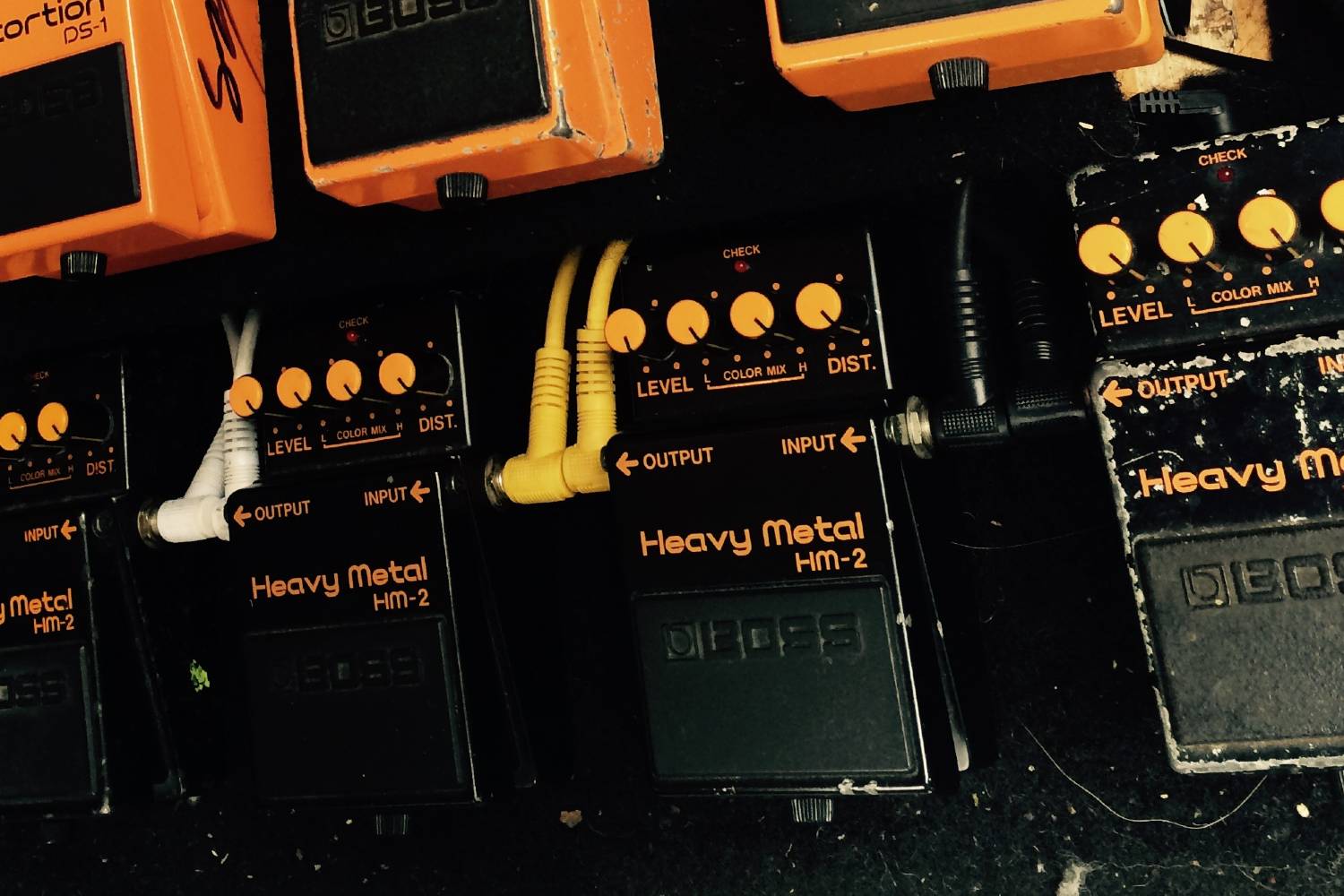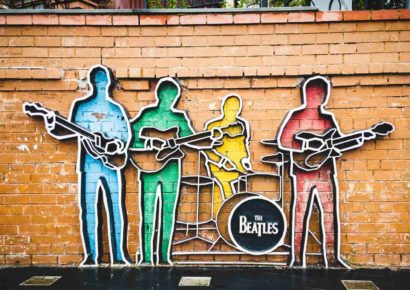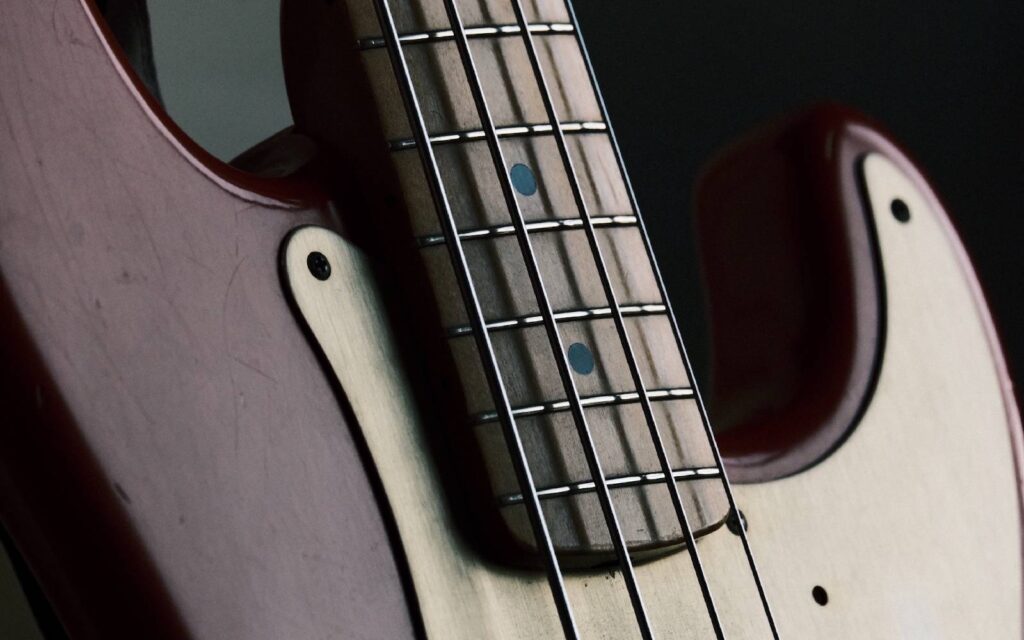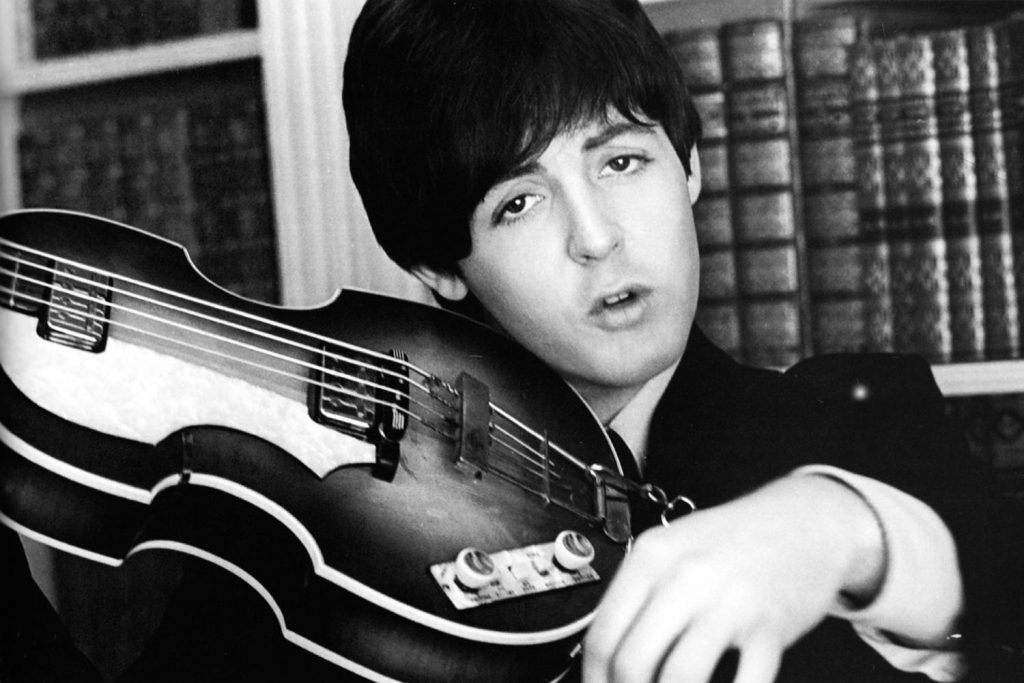Heavy music uses a lot of gain, which can easily turn into noise, in turn ruining the dynamic of metal.
Metal tones are generally seemingly simple, and oftentimes they’re static – meaning you’re not tap dancing like you might in other genres – read our Shoegaze pedalboard feature for an example!
What makes or breaks a metal pedalboard is the subtle changes and the order you that you decide to put your pedals, the massive amounts of gain usually associated with metal can get out of hand very quickly. We have a few tools – a tuner, some more gain from a pedal and a noise gate – as a foundation for you to build on.
Guitar effects pedal board
This might seem like an obvious one, but the harmonics and octaves of frequency information that gain introduces can get out of hand very quickly so always make sure you’re in tune. Even the slightest deviation from pitch can be massively exacerbated once we start piling gain on top of your guitar’s natural tone.
Guitar volume pedals, pitch shifters & compression
We start with utility pedals like volume pedals, pitch shifters, wah or a compressor if you need one. Adding gain squashes sounds together as well, so a compressor can sometimes be overkill and only serve to introduce noise. We add these early so that they can be shaped as they pass through your gain circuits. Pitch shifting or modulating after overdrive or distortion can introduce extra sonic artifacts for a more effected sound. This is a sound unto itself, so tread carefully!
EQ
EQ is a really handy tool to have here. While ‘scooping the mids’ has become a bit of a joke – it works! Metal music is busy, fast and intense, and overwhelming mids can muddy up fast playing, while also masking areas of an arrangement where vocals and a blasting snare need to sit. If you can, get rid of those mids!
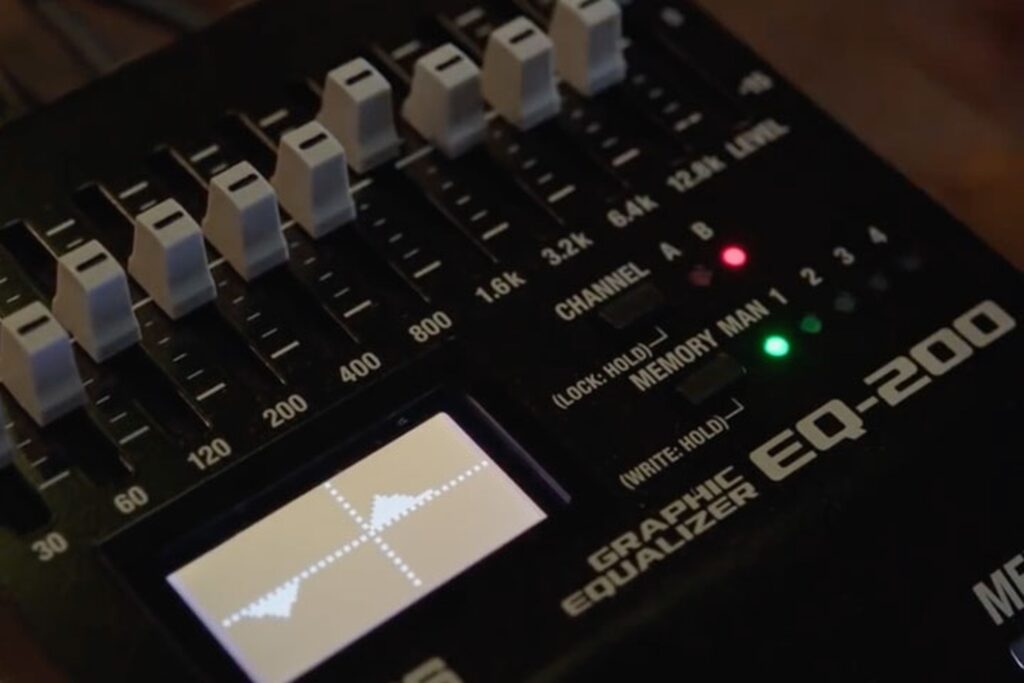
Noise gate
The position of the noise gate is a little bit open for interpretation, and for this reason, some players like two use 2-3 noise gates in their rig, so let’s get into it!
A noise gate has a threshold setting, blocking the signal when signal falls below this threshold. This can be adjusted to only allow your playing through, and clamping down on the space between your notes for a more dynamic tone. True heaviness comes from the difference between your playing and the silence, for more impact, so a noise gate is essential.
We put the noise gate before gain so that it can clamp down on that noise and ensure it isn’t squashed and amplified when the guitar’s signal arrives at a gain pedal!
Noise gate routing & the noise gate four cable method
A few of the more popular noise gates on the market have multiple sends and returns available, and for good reason. The Boss NS-2 Noise Suppressor pedal and ISP Decimator G-String, for example, have an input and output, as well as a send and return. The in and out are for your guitar, while the send and return can be used to either A) have a noise gate in the send and return of an amplifiers effects loops (clamping down on preamplifier hiss introduced at the amplifier stage) or B) to use your drive and gain pedals in their own loop, allowing the noise gate to reduce unwanted noise more efficiently and effectively. This is known as the ‘four cable method’.
For example, you could run your guitar into your tuner and then a Boss NS-2, and from the NS-2’s output into your amplifier. A gain pedal, like an overdrive or distortion would be connected via NS-2 Send > Distortion In > Distortion Out > NS-2 Return.

The NS-2 is technically a noise suppressor that acts as an expander (reducing noise) rather than a noise gate, which stops noise completely.
Can’t decide between having a noise gate before a gain pedal or in your amplifier’s effects loops? Do both!
Gain, overdrive and distortion
From here, you’ll have a well-treated and noise-gated signal to push through some gain without bringing up too much noise. A lot of metal tones involve a lot of gain, and often less low end than you’d expect. The Ibanez Tubescreamer is well-known amongst metal communities, its low-end roll off tightening the tone for more clarity while riffing on the lower strings.
Time-based effects
While these last few steps have us established with a static, solid metal foundation, we can now add time-based effects. It’s important to have time based effects like reverb and delay after your noise gate, or the delay trails that fall under the noise gates threshold will be reduced to nothing. Time based effects add space, depth and rhythm, and we want to make sure they’re not stamped out entirely.
From here – the world is your oyster! You can add more gain and EQ once your tone hits your amplifier, or add some modulation or other effects at different places in your signal chain. Always think about how the signal is being sent and returned, and what each pedal in the chain is ‘hearing’, and how you expect it to react.
Read more about the use of noise suppressors and expanders here.
